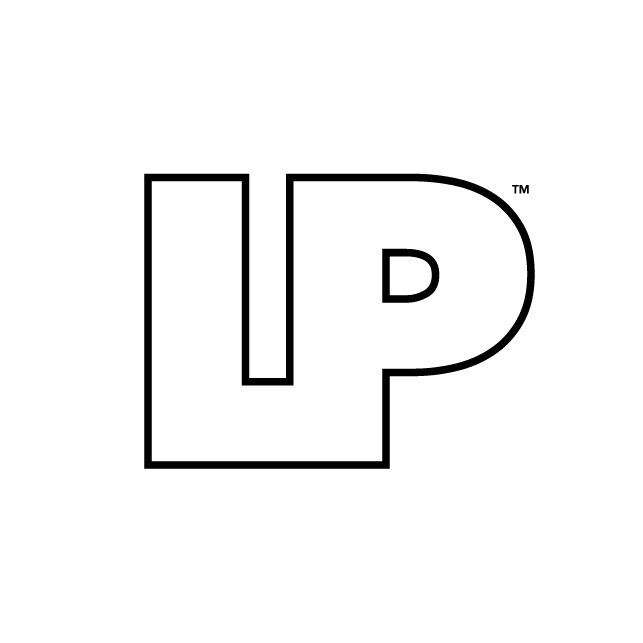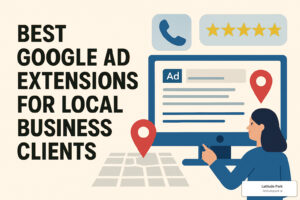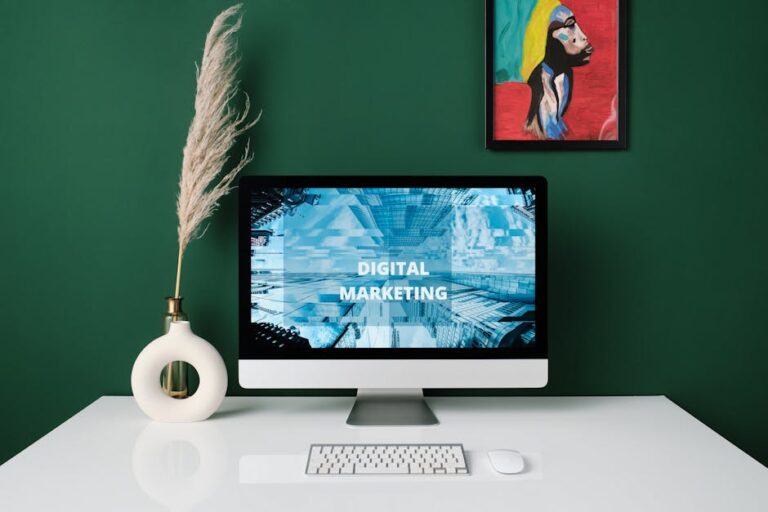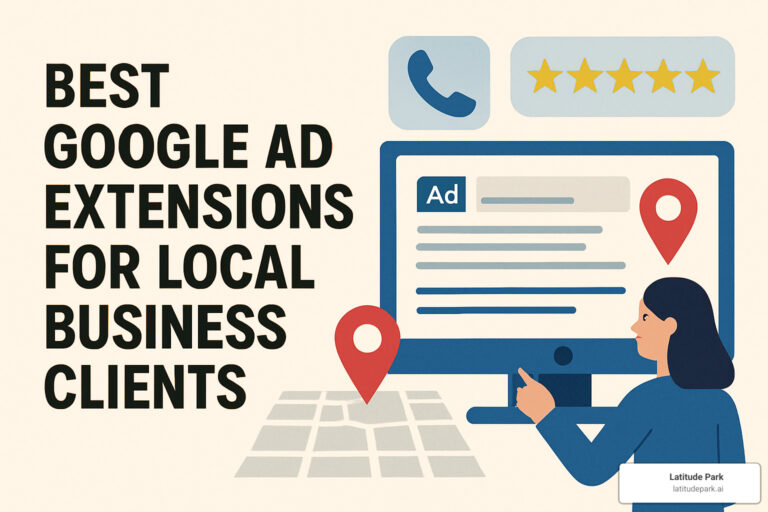
Are you considering using Google Ads to help grow your business? Google Ads is a powerful tool that provides targeted online marketing opportunities you can use to create visibility and generate leads.
Moreover, paid Google Ads are pretty cost-effective, even for small businesses. The average cost per click across all industries in 2022 was just $0.67. Imagine bringing a highly-targeted customer into your brick-and-mortar store for less than a dollar.
This guide will discuss everything you need to know about paid Google Ads — from setting up your campaign and analyzing results to creating ad copy that stands out. With the right strategy in place, even beginner marketers can see substantial growth with each click of their ads.
What Is PPC?
PPC stands for pay-per-click. It’s a type of marketing that focuses on targeting potential customers and paying for clicks, thus making it an effective way to reach more people.
Google Ads are the most popular type of PPC marketing because they make it easy for businesses to create campaigns and track progress. However, you can create paid ad campaigns on platforms like Instagram and Facebook, too.
Google Ads uses innovative algorithms to display ads in relevant locations. For example, you can display ads only to people searching in Chicago. You can also set budgets for your campaigns and receive comprehensive performance reports.
Ultimately, paid advertising is a great way to reach a highly-targeted audience while benefiting from cost control and performance metrics. It can be a great way to reach a wide audience, generate leads quickly, and easily measure your marketing campaign’s success.
PPC Terms
Understanding how paid campaigns on Google Ads work requires understanding a few terms first. While there is much more to paid advertising than these following terms, this is a great starting point for beginner marketers or those new to paid Google Ads.
Clickthrough Rate
Clickthrough rate is a metric that measures how often people click on your ad when Google displays it. A high clickthrough rate means a lot of people are engaging with your ad, which can create a positive cycle for you. More clicks usually mean more leads or sales, which can lead to even higher clickthrough rates as your ad becomes more well-known and gains trust from users.
Conversion Rate
Conversion rate measures an online advertisement’s effectiveness at generating a conversion—an action taken by someone who has seen your ad, such as a purchase or website visit.
Regarding Google Ads, the conversion rate is calculated by the number of conversions generated divided by the total number of impressions (or “ad views”). The conversion rate gives marketers an idea of how many people took the desired action out of all who saw the ad, which helps determine its effectiveness.
Quality Score
Quality score is an important metric used by Google Ads to determine the quality of your ad and calculate how much you should pay for a click. It’s determined by taking into account factors such as the following:
- The quality of your landing page
- The relevance of your keywords and ad text
- Your past performance
A higher quality score means better overall quality, so you can expect to pay less for clicks from Google Ads. Improving your quality score is one of the most efficient tactics to get more leads for your business without increasing its budget.
Ad Extensions
Ad extensions are a valuable tool for Google Ads users. They give ads an extra boost of visibility. Primarily, ad extensions create ad space by adding additional lines next to the ad text, for example, phone numbers, site links, and review snippets. You don’t have to add them to your campaigns, but they can be incredibly helpful.
What Are Paid Google Ads?
We briefly touched on this above in the section about paid ads. However, what exactly are paid Google Ads? Google Ads is an online advertising platform owned by Google. By leveraging the extensive search engine, paid advertisements allow you to reach more potential customers than before.
Depending on the goals of the paid advertisement, you can target specific audiences or markets with tailored messages based on demographic data, location, interests, and other factors. However, developing an effective paid ad campaign requires careful consideration and research to ensure it is optimized to generate leads, sales, and brand visibility while maintaining cost efficiency.
Types of Google Ads
Most businesses run basic search ads, but those aren’t the only types of Paid Google Ads available to you. While you’ve still got a few more options than the ones listed below, here are five of the main types of Google Ads.
Search
Google search ads are advertisements that appear on Google’s search engine results page when a user searches for something related to the advertisement. They can be seen at the top of Google’s page and often stand out due to their colorful boxes, although they can also occur in other parts of the page.
Google search ads differ from other ads because they target specific users based on their search queries. This allows you to deliver more relevant ads to your customers.
Display
Google display ads are images, videos, and interactive ads that appear on Google partner sites as users browse the web. You know, like the ones you see when reading an online magazine. Unlike other ads, they don’t require an immediate click-through to get noticed. Instead, they’re designed to promote brand awareness and drive website traffic over a longer period.
Video
Video ads are distinct from traditional online video content, such as YouTube video uploads, in that they feature promotional material created specifically to market a product or service. Compared to other forms of advertising, paid video ads can have a wider reach since they don’t necessarily require an audience’s active participation.
Shopping
Google shopping ads allow businesses to reach customers by showing their relevant products and services in search engine results. Unlike other ads, shopping ads don’t just create a link to the website; they show product information and prices in search engine results. This makes it easy for potential customers to find what they need without delving into the website itself.
In-App
Google app ads are simply advertisements that appear inside applications. This form of advertising is used to attract app users and promote products or services. Compared to other types of ads, such as banners or pop-up ads, app ads tend to have a much higher click-through rate since app users are more likely to be interested in relevant content when it appears within the app context.
Tips for Successful Google Ad Campaigns
Whew. You’ve already learned so much about paid campaigns and how to use them. Now, it’s time to put your basic knowledge to use and consider how to create a successful Google Ad campaign. Whether you’re just getting started or have been running your campaign for a while, here are a few tips on optimizing paid Google Ads.
Understand Your Audience
When creating Google Ads, it’s important to know your target audience so that you can develop a message and product that meets their needs. Research who you want to target based on factors like age and interests to get the most out of your campaign. Then create ads that appeal to their lifestyle or preferences.
If possible, use audience segmentation data to tailor ads for different groups. Measure the effectiveness of campaigns against target metrics such as conversions and clicks. Finally, track changes in performance and adjust measurements accordingly to ensure maximum efficiency.
Consider Search Intent
Search intent is an important concept for creating successful Google Ads. It refers to the purpose behind search queries, such as whether a user wants more information about a product or intends to purchase it. It’s a part of search engine optimization. However, it plays a critical role in paid ads, too.
By understanding search intent, you can create ads better tailored to the user’s search criteria, offering them more relevant search results. This increases your chances of creating a successful ad campaign. Overall, search intent can help ensure your business gets the most out of your ad spend.
Use a PPC Planning Template
PPC planning templates are incredibly useful when it comes to creating Google Ads. These templates provide guidance and structure when setting up every aspect of a PPC campaign. They allow you to better organize your PPC campaign’s elements, ensuring you hit all the necessary steps, such as research, keyword selection, budgeting, and monitoring.
In addition to their structure, PPC planning templates also provide valuable insight into PPC strategies that are proven successful by PPC experts and professionals.
Optimize Ad Copy
Keywords are critical for paid Google Ads success. However, it’s also about the copy attached to those keywords. After all, the copy is what compels people to click through to your landing page.
Start by researching the most effective keywords relevant to your product or service. Choose words that accurately depict what you’re offering, as this will optimize the effectiveness of your ads.
Additionally, ensure copy is descriptive and engaging to optimize your click-through rate (CTR). Keep phrases concise and simple, utilizing verbs that generate an actionable message and optimize user response. Think about what action you want your target audience to take and use keywords that promote that action.
Finally, test out different versions of ads with variations of the same messaging to optimize results.
Use Negative Keywords
Negative keywords are words or phrases that help narrow the focus of your Google Ads campaigns. These negative words or phrases limit the display of your ad to ensure that it’s not seen by users who aren’t interested in your products or services.
For example, if you were creating an ad for running shoes only available in women’s sizes, you could use negative keywords such as “men” or “boys” to ensure that your ad was not shown to people looking for shoes in those sizes. By using negative keywords, you can be sure that your ads will be relevant and well-targeted to potential customers.
Create a Killer Landing Page
A landing page acts as a hub to capture and retain your visitors, so creating one is essential to make them convert. This doesn’t have to be difficult. Focusing on a few key elements can be enough to develop a high-quality landing page.
First, start by ensuring your landing page clearly outlines the benefits of whatever product or service you are advertising. Potential customers should know exactly what they get if they engage with your business. Then, craft powerful headlines and engaging copy. These should immediately capture visitors’ attention and keep them reading until the end.
Finally, include eye-catching visuals, such as videos, photos, and graphics. You want to draw people in and motivate them to take action.
Consider PPC Services
Are you struggling to see success with paid Google Ads? Consider working with a PPC agency specializing in Google Ads. PPC specialists have the experience required to develop a targeted campaign that will maximize your ad spend and increase ROI. They know exactly how to optimize your campaign to boost CTRs and conversion rates.
You can access industry knowledge, valuable campaign insights, and skillful monitoring techniques by partnering with PPC specialists. This all allows your campaigns to stay ahead of the competition. Plus, it frees you up to focus on other areas of your business.
Ready to reduce campaign inefficiencies? Contact us today.









